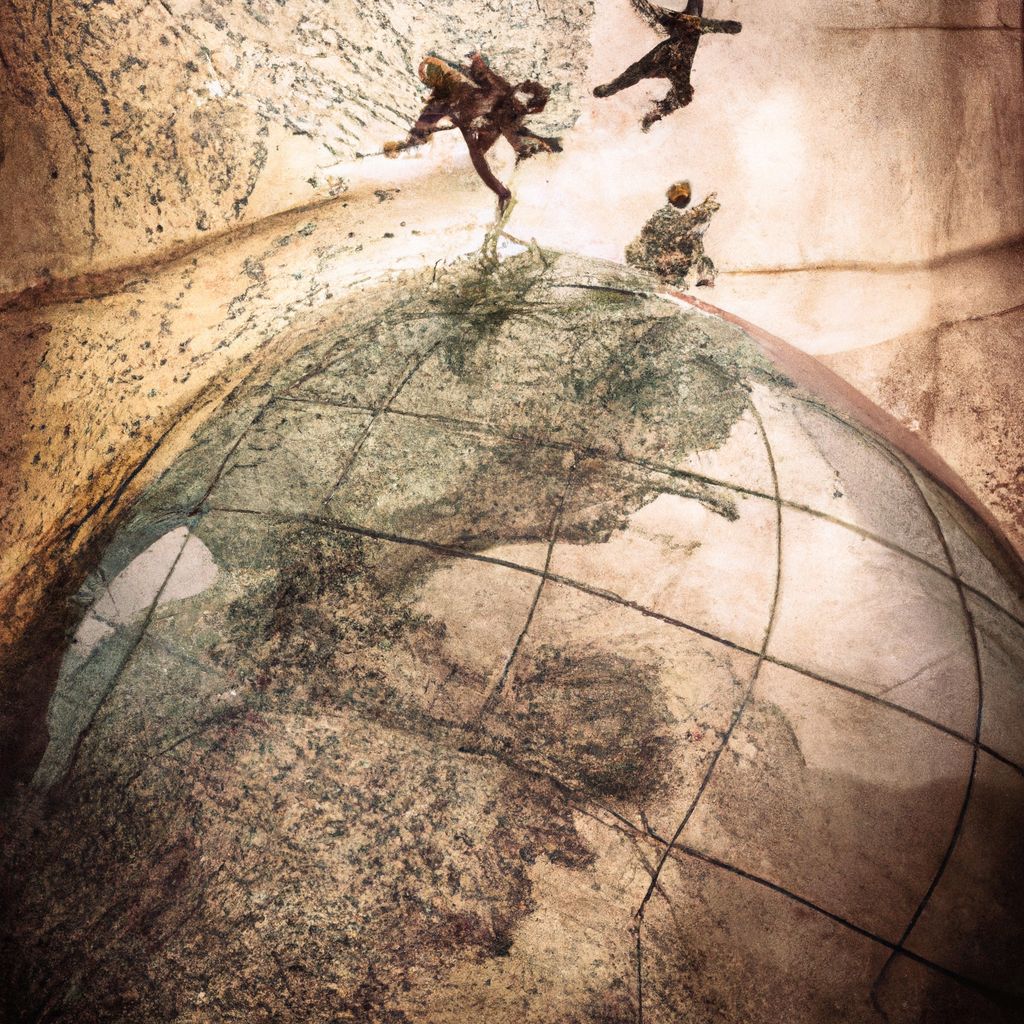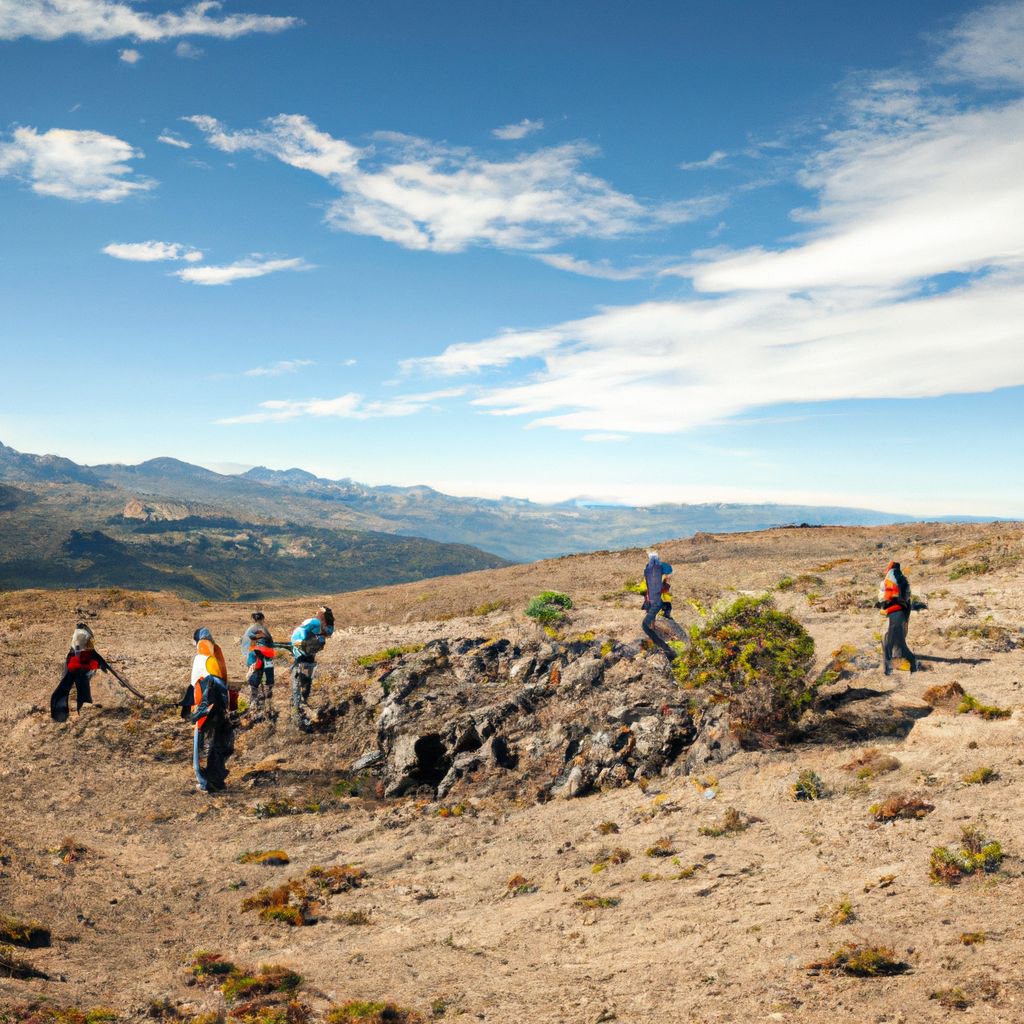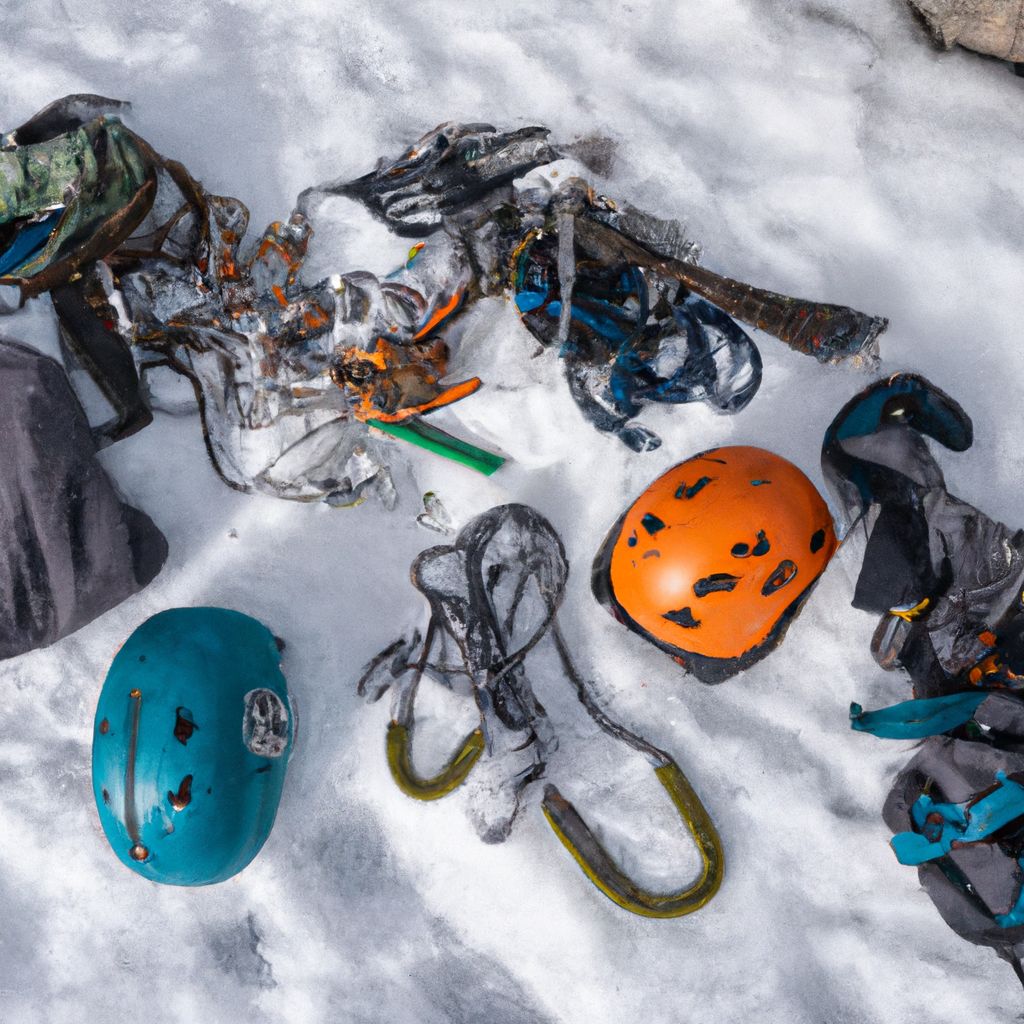- Introduction to Mountaineering
- Origins of Mountaineering
- Evolution of Mountaineering Equipment
- The Role of Mountaineering in Exploration
- Significant Mountaineering Achievements
- Mountaineering and the Environment
- The Future of Mountaineering
Introduction to Mountaineering

Mountaineering, also known as mountain climbing, is a multifaceted outdoor activity that involves ascending mountains. It is a demanding pursuit, requiring a unique set of physical and mental skills, combining stamina, agility, strength, and determination. A balance of technical knowledge and physical endurance is fundamental to this adventurous endeavor.
Mountaineering is more than just climbing a mountain. It involves various elements such as rock climbing, hiking, ice climbing, navigation, and survival skills. The sport is both physically challenging and mentally stimulating, offering an escape from the mundane and a chance to conquer personal limitations.
Over the years, mountaineering has gained significant popularity worldwide, with thousands of enthusiasts attempting to scale the world's highest peaks each year. It is seen as a testament to human resilience and determination, pushing the boundaries of what is physically and mentally possible.
Mountaineering is also an essential part of the adventure tourism industry, contributing significantly to local economies, especially in regions with notable mountain ranges. Its impact on local communities and the environment, however, is a topic of ongoing debate and concern.
The history and evolution of mountaineering is a captivating tale of human endurance, technological advancement, and our perpetual fascination with the world's highest peaks.
Origins of Mountaineering

The origins of mountaineering can be traced back to prehistoric times when our ancestors had to scale mountains for survival purposes. They climbed to find food, escape enemies, or seek shelter. However, mountaineering as a recreational activity is rather recent, beginning only in the late 18th century.
The first recorded mountaineering expedition is often attributed to Dr. Michel-Gabriel Paccard and Jacques Balmat, who successfully summited Mont Blanc in France in 1786. This climb is considered the birth of modern mountaineering. Mont Blanc, Europe's highest peak, served as a beacon for those looking for a challenge and adventure, and the successful ascent marked the beginning of high-altitude mountaineering.
Initially, people began climbing mountains out of curiosity and a desire for exploration. The Enlightenment era, with its emphasis on scientific exploration and discovery, spurred interest in geography and the natural world. Mountains, with their majestic heights and unexplored terrains, were seen as the ultimate challenge.
Early mountaineers were often scientists or explorers looking to study the geology, flora, and fauna of these high-altitude environments. However, as more and more people began to scale peaks for the sheer joy and exhilaration of the climb, mountaineering developed into a sport of its own.
Thus, mountaineering has its roots in survival, curiosity, exploration, and a desire to conquer the seemingly unconquerable.
Evolution of Mountaineering Equipment

The evolution of mountaineering equipment over the years has been remarkable, contributing significantly to the safety and success rates of climbs. In the early days, mountaineers used rudimentary tools and relied heavily on their physical strength and courage. However, as the sport evolved, so did the gear, with advancements in technology leading to more sophisticated and safety-focused equipment.
One of the most significant advancements in mountaineering equipment has been in the field of footwear. Early climbers often used hobnail boots, which were sturdy but offered little comfort or warmth. The advent of plastic boots in the 1970s provided better insulation and reduced the risk of frostbite. Today's climbing boots are lightweight yet sturdy, made with high-tech materials that provide warmth, comfort, and grip.
Besides footwear, climbing ropes have also seen considerable improvements. The first climbers used hemp ropes that were heavy and less durable. The invention of nylon ropes in the 1930s revolutionized mountaineering, offering greater strength and flexibility. Modern climbing ropes are lightweight, high-strength, and designed to absorb the energy of a fall, reducing the risk of injury.
Other essential mountaineering equipment such as ice axes, harnesses, and carabiners have also evolved considerably. Today's equipment is designed with a focus on safety, efficiency, and weight reduction, enabling climbers to tackle more challenging terrains and conditions.
Technological advancements have not only improved the physical gear but also communication and navigation tools. Satellite phones and GPS devices have become essential tools for modern mountaineers, providing reliable communication and accurate navigation, even in remote and challenging environments.
The evolution of mountaineering equipment reflects the continuous drive for innovation and safety in the sport, enabling climbers to push their limits while reducing risks.
The Role of Mountaineering in Exploration

Mountaineering has played a pivotal role in exploration and discovery, contributing significantly to our understanding of the world. The desire to conquer the highest peaks has led to numerous explorations, uncovering secrets of remote and often inaccessible regions.
One of the most notable examples is the exploration of the Himalayas. The quest to scale Mount Everest, the world's highest peak, led to extensive scientific expeditions, revealing valuable information about high-altitude ecosystems, geology, and weather patterns. The successful ascent of Everest by Sir Edmund Hillary and Tenzing Norgay in 1953 is not only a milestone in mountaineering history but also a significant achievement in the field of exploration.
Mountaineering explorations have also contributed to our knowledge of human physiology. The extreme conditions encountered during high-altitude climbing have provided insights into how the human body adapts to low oxygen levels, cold temperatures, and physical stress. This knowledge has been instrumental in the fields of sports science, medicine, and even space exploration.
Moreover, mountaineering has played a role in mapping remote regions. Early mountaineers were often accompanied by cartographers who used the vantage points offered by high peaks to map uncharted territories. Today, with the advent of satellite imaging, mountaineers continue to contribute to geographic knowledge by verifying and refining these images.
In the realm of climate science, mountaineers help track changes in glaciers and snow patterns, providing crucial data for studying climate change. Their observations and photographs document the visible impacts of global warming, highlighting the urgency of climate action.
Thus, mountaineering, while being a sport and a personal challenge, has also served as a powerful tool for exploration and discovery, enhancing our knowledge and understanding of the world.
Significant Mountaineering Achievements

Mountaineering history is filled with momentous feats that have pushed the limits of human endurance and tenacity. These achievements, often against insurmountable odds, have defined the sport and inspired generations of climbers.
One of the most significant milestones in mountaineering history is the first successful ascent of Mount Everest by Sir Edmund Hillary of New Zealand and Tenzing Norgay of Nepal in 1953. The duo faced extreme weather conditions, treacherous terrains, and the unknown effects of high altitude, yet their determination and resilience led them to the summit. Their achievement symbolizes the spirit of exploration and the human desire to conquer the highest peaks.
Another notable mountaineering feat is the first ascent of K2, the world's second-highest peak and often considered the most challenging climb. Italian climber Achille Compagnoni and Lino Lacedelli reached the summit in 1954, overcoming severe weather, technical climbing difficulties, and the formidable 'Death Zone' – an area above 8,000 meters where the lack of oxygen poses significant risks.
In the realm of high-altitude climbing, Polish mountaineer Jerzy Kukuczka deserves special mention. He became the second person to climb all fourteen 8000-meter peaks, a feat he accomplished in less than eight years. Remarkably, most of his ascents were made in winter, and many were via new routes, underscoring his exceptional mountaineering skills and endurance.
More recently, the achievement of Spanish mountaineer Kílian Jornet has been widely celebrated. In 2017, he climbed Everest without using supplemental oxygen or fixed ropes, setting a new speed record. His feat exemplifies the evolution of mountaineering towards faster, lighter ascents, known as 'alpine style' climbing.
These achievements highlight the courage, determination, and physical prowess of mountaineers. They serve as a testament to what humans can accomplish when they dare to challenge their limits.
Mountaineering and the Environment

While mountaineering has contributed significantly to exploration and our understanding of the world, it also has an undeniable impact on the environment. The increasing popularity of the sport, coupled with irresponsible practices, can lead to environmental degradation in fragile mountain ecosystems.
One of the most visible impacts is littering. Popular climbing routes often witness a buildup of waste materials left behind by climbers. This not only mars the natural beauty of the mountains but can also harm local wildlife and contaminate water sources. The issue of waste on mountains like Everest has garnered international attention, leading to clean-up efforts and stricter regulations.
Another concern is the impact of mountaineering on local flora and fauna. The disturbance caused by climbers can disrupt wildlife habitats and lead to soil erosion. Furthermore, the construction of infrastructure to support mountaineering tourism, such as lodges and trails, can result in habitat loss and fragmentation.
However, the mountaineering community has been increasingly aware of these issues and has taken steps towards responsible mountaineering. There is a growing emphasis on 'Leave No Trace' principles, which advocate for minimal impact practices such as carrying out all waste, respecting wildlife, and staying on established trails.
Conservation efforts, often led by mountaineering organizations and local communities, aim to protect and restore mountain environments. These include reforestation projects, clean-up expeditions, and educational programs to raise awareness about environmental stewardship among climbers.
Mountaineering, as a sport that relies on the majesty and grandeur of the natural world, has a crucial role to play in environmental conservation. The future of the sport depends on a collective commitment to preserving the very landscapes that inspire and challenge climbers.
The Future of Mountaineering

The future of mountaineering is likely to be shaped by several factors, including technological advancements, climate change, and ongoing conservation efforts. These factors present both challenges and opportunities for the evolution of the sport.
Technological advancements are expected to further revolutionize mountaineering. Innovations in gear and equipment will continue to improve safety and efficiency, enabling climbers to tackle more challenging terrains and conditions. Developments in communication and navigation technology, such as satellite and GPS technology, will also enhance the ability of climbers to navigate safely and stay connected, even in remote regions.
Climate change, however, poses a significant challenge. Rising temperatures are causing glaciers to retreat and snowfall patterns to change, altering the landscapes that mountaineers traverse. These changes can make certain routes more dangerous or even impassable. As a result, mountaineers and the broader mountaineering community will need to adapt to these changing conditions and play a role in climate action.
Conservation efforts are also likely to shape the future of mountaineering. As awareness of the environmental impact of mountaineering grows, there is likely to be increased emphasis on sustainable and responsible climbing practices. This could include stricter regulations on waste disposal, limits on the number of climbers allowed on certain routes, and more extensive education programs on environmental stewardship for climbers.
The future of mountaineering, therefore, holds a delicate balance between pushing the boundaries of human achievement and preserving the natural environments that make the sport possible. As we look ahead, the enduring appeal of mountaineering lies in its ability to adapt and evolve in response to these challenges and opportunities.








